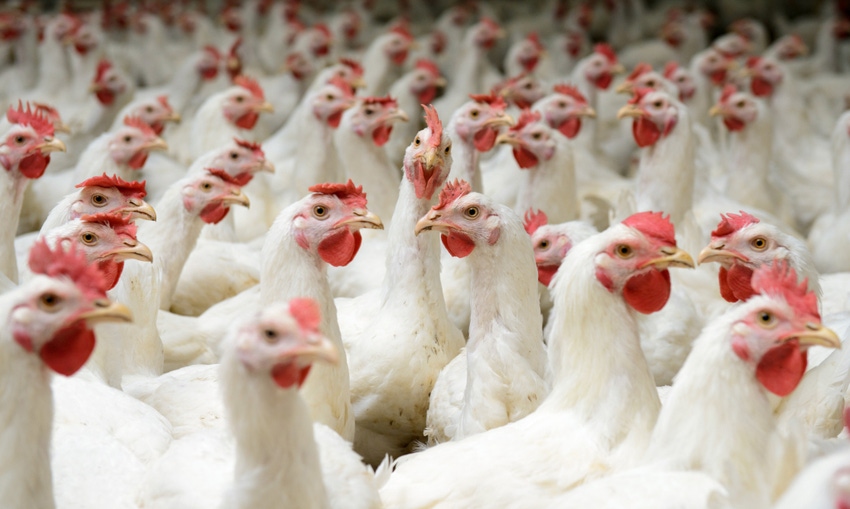Assuring stability and vibrancy of North Carolina's livestock and poultry farms is the goal.
January 28, 2018

By R. DOUG MECKES, D.V.M.
In North Carolina, agriculture matters. Our farm community contributes nearly $84 billion annually to the state’s economy and provides 17% of the state’s jobs. Of that, animal agriculture, including livestock, dairy, and poultry, accounts for 68% of farm cash receipts. North Carolina ranks second in hog production and third in overall poultry production in the nation.
As our state veterinarian, I am charged not only with preserving that economic benefit, but also assuring the health and well-being of North Carolina’s farm animals. Perhaps nothing is more important to that charge than disaster preparedness and disease prevention.
Members of U.S. Congress now have the chance to bolster our work in the state and protect North Carolina’s farm community by supporting three essential provisions proposed in the 2018 Farm Bill.
First, I support, along with numerous animal agriculture groups, animal science organizations, and veterinarians, a new Animal Disease and Disaster Prevention and Response Program for inclusion in the farm bill. This program speaks specifically to ensuring fully trained, appropriately equipped, response-ready teams at the state level.
As the former branch chief of the Food, Agriculture and Veterinary Defense Branch of the Department of Homeland Security’s Office of Health Affairs, I uniquely recognize the steps that must be taken to safeguard animal agriculture. Core to that effort is the need to identify and address gaps in the nation’s ability to prepare for and respond to an animal disease outbreak.
When considering the need for disease prevention preparedness, one needs look no further than the example of the 2001 Foot & Mouth Disease (FMD) outbreak in the U.K. This devastating event caused the loss of more than 10 million sheep and cattle in attempts to prevent the disease from spreading and resulted in an incredible cost to the farm community and the agriculture economy, estimated at more than $16 billion.
An example closer to home is the 2015 outbreak in the U.S. of highly pathogenic avian influenza (HPAI). The swift movement of this terrible disease across states in the Midwest resulted in the loss of nearly 50 million chickens and turkeys.
That is why I also support provisions that call for increased funding for the National Animal Health Laboratory Network (NAHLN). The value of the NAHLN, the first line of defense in animal disease prevention and testing, was amply demonstrated during the 2015 HPAI outbreaks, when thousands of samples were tested within hours to ensure depopulation of infected flocks. NAHLN performed surveillance in surrounding areas to halt disease spread, to test premises to determine freedom of disease before repopulation could occur, and allow resumption of international trade.
As one of the 12 original NAHLN laboratories, North Carolina’s Rollins Veterinary Diagnostic Laboratory in Raleigh is designated as a core laboratory. A core member laboratory receives significant infrastructure support from various federal and state agencies, which enables these laboratories to be fully committed to the NAHLN mission and able to respond around the clock to domestic or foreign animal disease emergencies.
Lastly, a proposal for establishing and funding a robust U.S. FMD vaccine bank for inclusion in the 2018 farm bill is considered a top priority by many in the animal agriculture industry. My colleagues in state animal health remain deeply concerned about the absence of vaccine for use in response to the introduction of a foreign animal disease. That is certainly the case in North Carolina, home to nine million pigs east of I-95.
No country with a livestock industry comparable to that of the U.S. has had to address an outbreak of FMD, and the negative impact would be widespread. An FMD outbreak in the U.S. would immediately lead to staggering trade implications. By some estimates, over 10 years, the cumulative loss due to an uncontrolled FMD outbreak in the U.S. would be about $200 billion.
Animal agriculture in North Carolina shapes the fabric of our state and the backbone of our rural communities. Assuring stability and vibrancy on our state’s livestock and poultry farms by including and passing these provisions in the 2018 farm bill is the responsible thing for our nation’s lawmakers to do and is the right thing to do for North Carolina farmers, for the state’s economy and to preserve food and farm security for the long term.
Doug Meckes, D.V.M., is the state veterinarian and director of the Veterinary Division for North Carolina’s Department of Agriculture & Consumer Services. The division employs 150 and manages and operates the state’s four veterinary diagnostic laboratories.
You May Also Like


.png?width=300&auto=webp&quality=80&disable=upscale)
